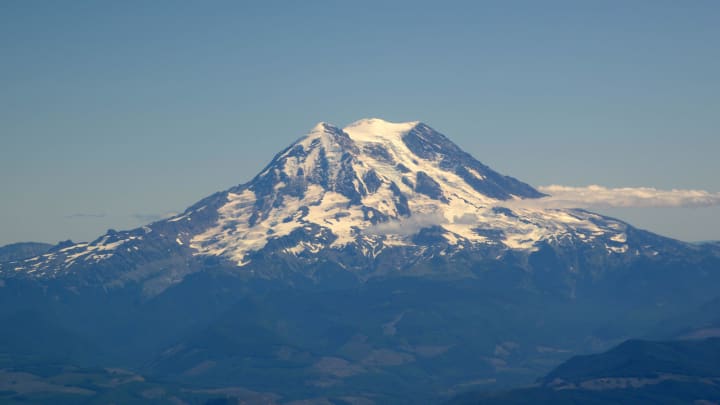The Cascade Mountain Range: ‘Pacific Ring of Fire’

The Pacific Ring of Fire
Mountaineers flock to the Pacific Northwest annually to challenge the iconic Cascade mountains, known as the ‘Pacific Ring of Fire’. The Cascade Mountain Range, located in western North America, stretches from southern British Columbia through Washington and Oregon to Northern California. The diverse ecosystems of this mountain range support various wildlife, including black bears, elk, and mountain goats.
The range also features active volcanoes charging with significant geothermal activity. This group of ancient and rugged mountains threaten to erupt at any time, hence the combustible name. The Cascade Mountains are relatively young in geological terms, with their formation primarily occurring over the past 40 million years, though the high volcanic peaks have formed within the last few million years.
Significant Cascade Mountain Peaks
Mount Rainier: Mt. Rainier stands 14,411 ft. and is the highest peak in the Cascade Range, and in Washington state. This active stratovolcano is the most glaciated mountain in the lower 48 US states.
Mount St. Helens: Mt. St. Helen’s was once the 5th highest peak within the Cascade Range, standing 9,677 ft. That all changed in 1980 when volcano erupted, and the mountain was reduced in stature by approximately 1,300 ft. Mt. St. Helen’s now reaches to 8,366 ft.
Mount Adams: This stratovolcano rises to 12,281 ft., making it the second-highest peak in Washington State. It is known for its symmetrical appearance and less frequent eruptions. This is an excellent mountain for beginner mountaineers, as it is less glaciated that Mt. Rainier or Mt. Baker.
Mount Hood: Mount Hood stands at 11,240 ft., making it the highest peak in Oregon. It’s a potentially active stratovolcano, and a great destination for climbing and skiing.
Mount Jefferson: Located in Oregon, Mount Jefferson reaches 10,497 ft. This stratovolcano is less accessible than most of the prominent members of ‘The Ring of Fire’.
Mount Baker: This northern Washington peak rises to 10,781 ft. It is the 2nd most glaciated mountain in the lower 48 US states, making it a formidable mountaineering challenge. Beyond its potential volcanic activity, Mt. Baker is among the snowiest places on Earth.
Lassen Peak: Lassen Peak, in Northern California, reaches 10,457 ft. It resides in the southernmost Cascade Range, and last erupted in the early 20th century.
Some of the best mountaineers in the world cut their teeth on these mountains, as the highly glaciated terrain found on Mt. Rainier and Mt. Baker provide an excellent training ground for climbing higher and more technical peaks, including Denali and Mt. Everest. Climbing in the Cascade Mountain Range is not for the faint of heart, given the steep and glaciated terrain. The beautiful and diverse range provides varied routes and challenges for adventurers of all levels, spanning technical ascents on ice and rock to less demanding scrambles and scenic hikes. Enjoy!
